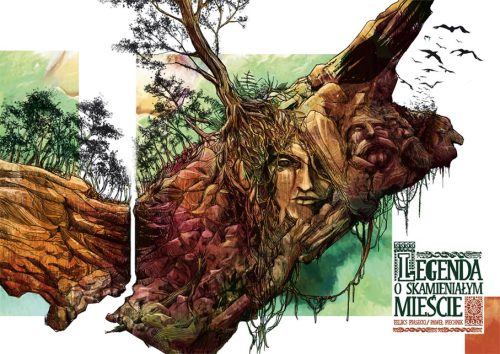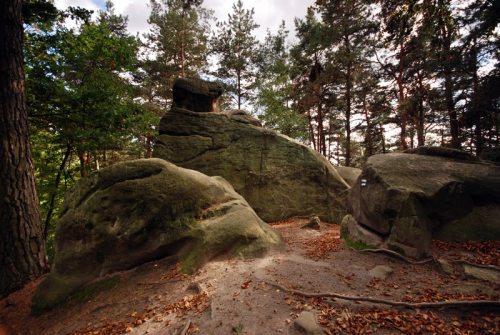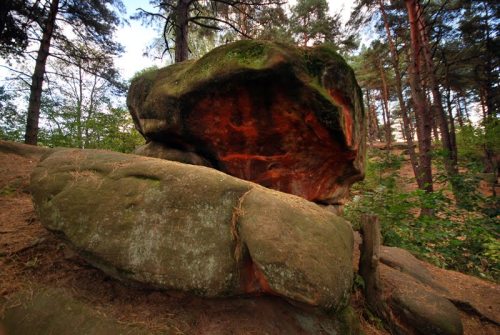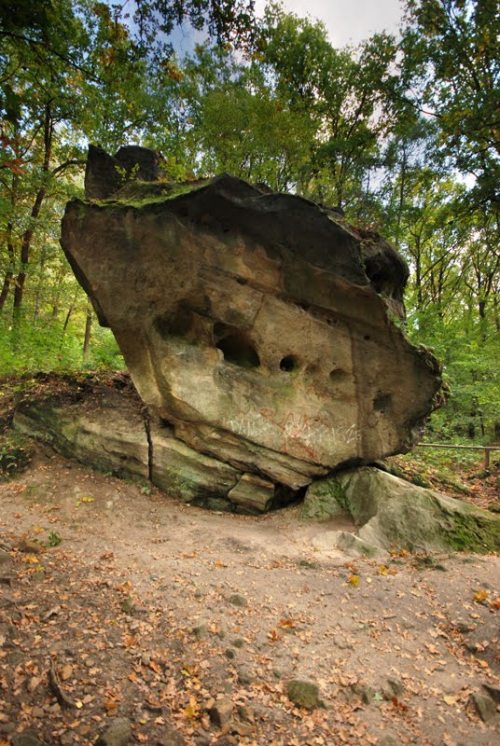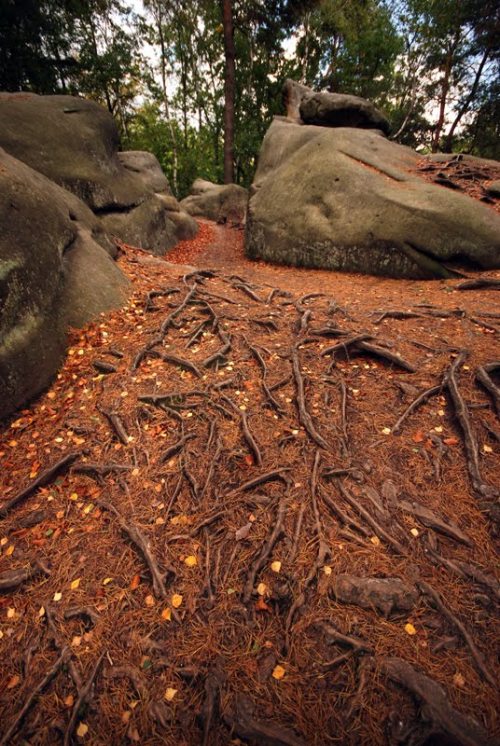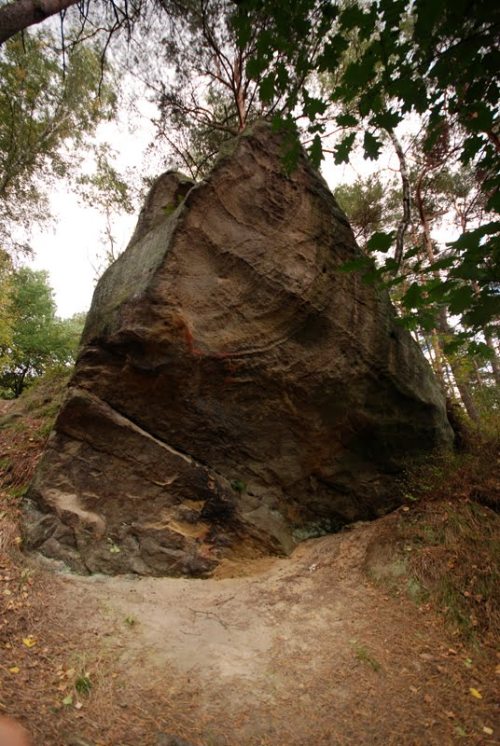lamus-dworski:Legends from ‘Skamieniałe Miasto’, Stone City Nature Reserve in Poland.Nam
lamus-dworski:Legends from ‘Skamieniałe Miasto’, Stone City Nature Reserve in Poland.Name of this nature reserve located near the town of Ciężkowice, southern Poland could be translated literally as a ‘City Turned into Stone’. It encompases a large system of sandstone rock formations, stretching through valleys and hills riddled with caves and crevices. Each one of the distinctive rock formations has its own name and a story behind it.An old legend tells us about an ancient and highly respected Slavic custom of hospitality. According to this well-known legend the whole area of the reserve was once a beautiful and prosperous city. However, its inhabitants began to grow in greed and were refusing to let in unwanted guests who arrived at their gates. As a punishment from the gods, the whole city was turned into stone, and only deteriorates over the centuries. The ‘law of hospitality’ was very important in the Slavic culture of old Poland and of the surrounding Slavic states - many old documets tell us even about people being excluded from communities for refusing to accomodate, feed and entertain their guests.The place is connected to numerous local legends. According to one of them, the city’s councilors were governing it very well, making wise decisions and taking a good care of the people. However, they loved to drink and party, focusing their lives on the fun and enjoyment. Drunkenness and promiscuity flourished in the city. When it was turned into stone, the councilors got trapped in the middle of a feast inside the city hall, and remain there until today. Their suffering will end and they will be set free when waters of the nearby river Biała will flood the stone town and reach the rock that is called now a ‘City Hall’. It is one of the biggest rocks in the reserve.A single rock called ‘Hermitage’ was once a home of a hermit who was a good human with a humble heart. He lived outside the walls of the noisy city. One day a stranger appeared, sat on a bench by the entrance to the hermit’s cottage and asked for a cup of water, visibly exhausted after a long journey. The humble hermit gave him everything he could, and let him rest a little on his property. Before departing, the stranger told the hermit: ‘My friend, if you cherish your life, pack your things and get out of here as fast as you can. Tomorrow it will be too late’. Then he asked for a bit more water. but before the hermit came back with a cup, the stranger vanished into thin air. Later in late afternoon the hermit decided to leave for a long journey. And indeed, the next morning it would be too late for him - the city, including hermit’s empty cottage, was turned into stone overnight.Two further legends reveal stories behind the ‘Rock with a Cross’. Once a church was built there, but the priest who was in charge of the parish loved to play cards and dice games. Oftentimes he couldn’t find opponents, so eventually he started playing against a chort (Slavic demon comparable to a devil). The chort let him win a few times so that the priest grew too much in confidence. Eventually, they played for high stakes and the priest started loosing everything to the point that all he had to play for was the building of the church itself. And of course - he lost. But the tricky chort waited a little to take what was his - he turned the whole church into stone on a Sunday when it was full of praying people. Second tale shows what happened next. A chort kept appearing on the top of the rock. He was often drunk, screaming and throwing stones and flints on the nearby paths, scaring off horses of the passing travellers and merchants. Local people were often coming back home with scars, hit by the flints thrown by the chort as well. Local community was more and more irritated. Finally, a brave young man decided to end the problem for good. He prepared a steel cross and sprinkled it with holy water, sneaked to the site when the chort was away and installed the cross on the top of the rock. When the chort arrived back, he was heavily drunk again and got burnt, touching the cross that he didn’t expect to be in his favourite spot. He never appeared again, and the road was safe for the travellers again.A rock called ‘Witch’ is one of the most interesting-looking in the whole reserve. From the side, it indeed looks like a head of a witch seen in profile. According to local tales, a sabbath was organized below it, and a mysterious circle can be found there on the ground. The whole site is said to be full of energy that draws in the magick. Another part of the reserve is commonly called ‘Gorge of Witches’ - it’s a long narrow way between high rocks that ends by a waterfall. Supposedly, it was a place where the witches met with a devil for the sabbath.Waterfall at the end of the ‘Gorge of Witches’. Photo © Mieczysław NowakAnother legend tells us more about a rock called ‘Grunwald’. It is said that unimaginable treasures are hidden inside it. Once a year a crevice in the central part of the rock opens up and people with a brave heart could go inside to take a small part of the treasure with them. They have to be extremely quick though, otherwise the rock would close itself again behind their backs and the hidden cave would become their tomb.A rock called now ‘Badger’ is a central part of a formation with many small cavities and crevices. According to another legend there was once a local knight who got interested in the rock formations, an extremely tight-fisted man who didn’t trust anyone. He started to hide his wealth in the small caves and crevices of the rocks, afraid that his earthly goods might be stolen from his main castle. Eventually he became so paranoid, that he couldn’t even walk away from the rocks, and guarded the hidden goods just like badgers guard their dens. His greed was punished eventually - he ran out of food, lost his strenght, and one night he finally fell asleep. Not long after he was turned into a badger. He shared the sad fate of the rest of the stone city and sleeps there until today, petrified.Those and other similar legends make the Stone City Nature Reserve a mysterious place, full of old stories. But no wonder the local people remained superstitious towards the site - the setting and shapes of the stone formations create unique acoustic effects. Walking between the huge rocks, one can hear distant whispers and steps, murmurs and cracks, whistling of the wind, almost as if the lost city is still living inside.Photos at the beginning © Marek Koszorek.Illustrations from a comic drawn by Paweł Piechnik, via alejakomiksu.com. -- source link
Tumblr Blog : lamus-dworski.tumblr.com
#polish legends#folk tales#poland#polska
